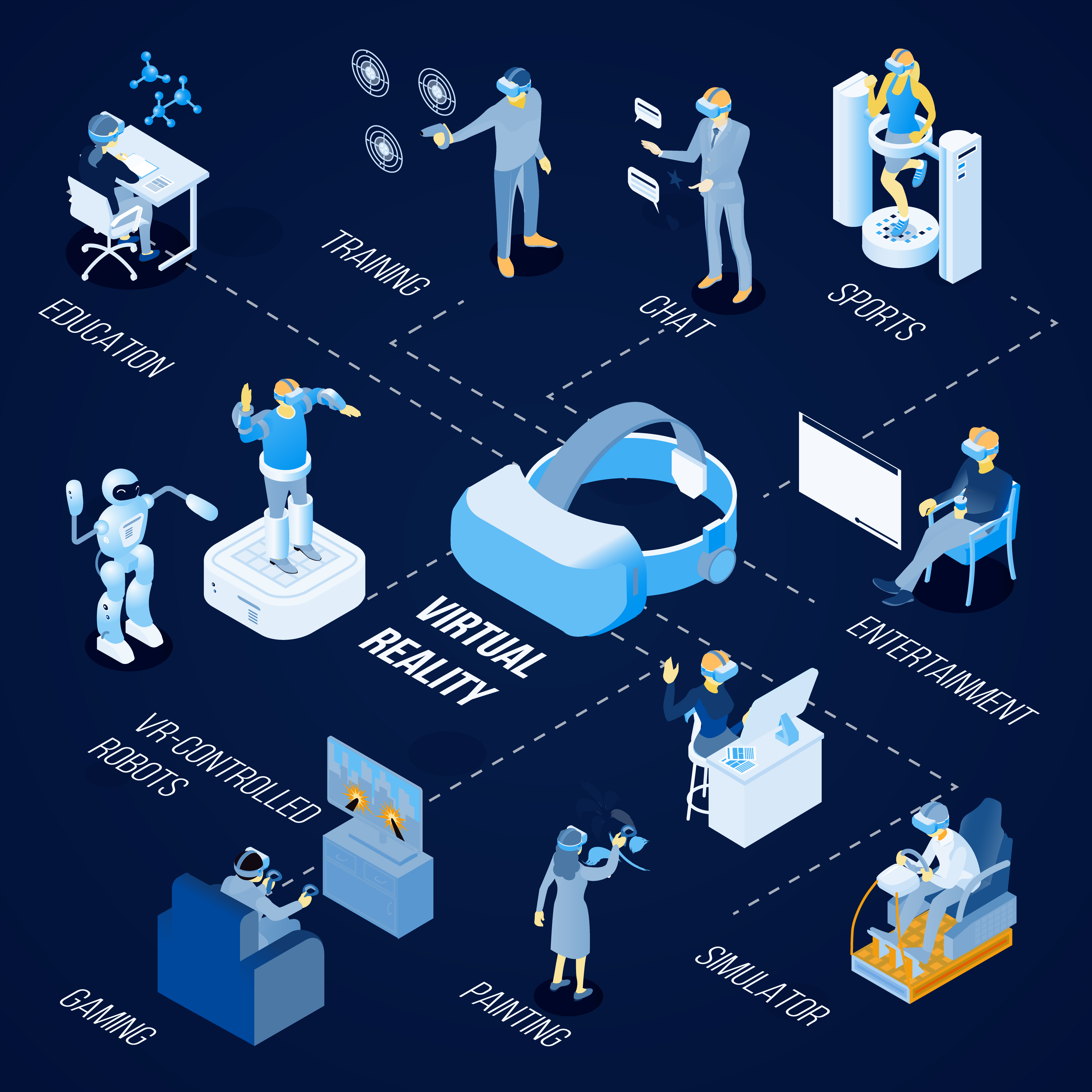As the name suggests, it is an amalgamation of two technologies, Website and Virtual Reality. A website consists of the three main programming languages: HTML, CSS and Javascript, whereas Virtual Reality is a simulated experience that one can experience using head-mounted displays like Oculus Quest or HTC Vive.
WebVR was the first API built by Immersive Web, a working group, which has a close association with Mozilla whose mission is to bring high-performance Virtual Reality (VR) and Augmented Reality (AR) (collectively known as XR) to the open Web via APIs to interact with XR devices and sensors in browsers.
Before we delve into the transition from WebVR to WebXR, it is important for us to understand the terms VR, XR and API in VR in detail.
Virtual Reality
Virtual Reality is a computer-generated environment, which allows users to see 3D content or a 360-degree video using a VR headset like Oculus Quest or HTC Vive. Unlike other technologies, VR creates a greater sense of immersion and interactivity by teleporting users to the centre of the action.
Extended Reality or XR
Extended Reality or XR is an umbrella term for immersive technologies like VR, AR and MR. XR is quickly making its way in the enterprises and in other parts of human to human collaboration and connections.
API in VR
API stands for Application Programming Interface, and it’s a common term, which is found in the development of VR and AR content. It enables seamless connectivity between software and the operating system.
The current usage of an API can be easily found in an e-commerce website or any other websites in particular. Mostly, you would find various sign-in options across websites saying, ‘sign in using Google, Facebook or LinkedIn’. These are nothing but the API’s provided by the companies to fasten the validation process and build seamless connectivity between one software and the another.
While the WebVR API was designed to support a few VR headsets, WebXR, a new version that came out of Immersive Web, expanded the possibilities to support both AR and VR on the web.
What are the benefits of WebVR?
Greater Interoperability: One of the biggest benefits of WebVR content is that it is compatible across different browsers, operating system and VR/AR devices. For example, Mozilla launched a new WebXR app called ‘Hello WebXR’, which is compatible with most headsets that use web browsers such as Oculus Browser on the Quest or Google Chrome on PC VR headsets.
Time-Saving: It is a big relief for VR/AR developers as they don’t have to write a huge chunk of Javascript to create WebXR experience. With readymade frameworks like A-frame, React, Three.js, Phaser and much more, web developers and designers can create a 3D WEBXR scene for the web browser and share the URL link with their colleagues.
Easy to use: WebXR app is easy to integrate into the enterprise IT ecosystem. It won’t be difficult for users to grasp information as the WebXR expands to different platforms – smartphones and desktop.




